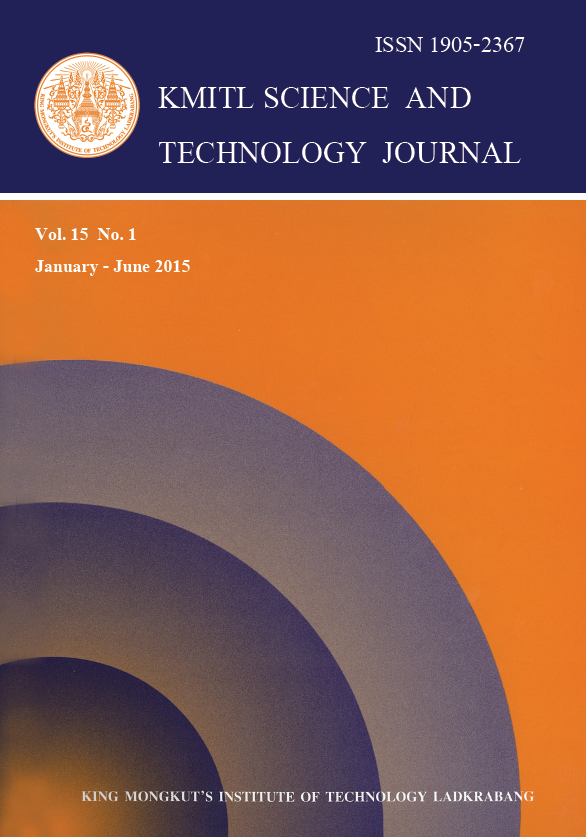Agrobacterium-mediated Transformation of Two Cassava Cultivars (Nwibibi and TMS 60444)
Main Article Content
Abstract
Cassava is an important crop in the tropics and subtropics for food security and income to some 500 million people. However, the ever-increasing human population especially in the developing countries, the low protein content, vitamins, minerals and various insects and virus diseases has posed a challenge to boost cassava production in limited cultivable land. Biotechnology has been identified as a powerful tool for genetic transformation. Agrobacterium tumefaciens, a ubiquitous soil borne pathogen employs a highly evolved and still incompletely understood gene transfer and integration system that appears optimized for efficient nuclear targeting and integration. A bacterial strain LBA 4404 containing a binary vector pB 2300 with the npt11 gene as selectable marker and a green fluorescent protein (GFP) as a tracker was used for the experiments. Subsequent selection of transformed tissues with cefotaxime and paramomycin resulted in the recovery of antibiotic-resistant, GFP-expressing lines of friable embryogenic callus, from which embryos and subsequent plants were regenerated. The use of npt11gene offers new possibilities to engineer transgenic cassava lines with T-DNA insertions and to produce transgenic cassava with improved agronomic traits. The positive response of this local Nigerian farmer preferred cassava cultivar to Agrobacterium transformation opens up possibilities of incorporating agronomically desirable traits for improved cassava root quality.
Keywords: Cassava, Agrobacterium tumefaciens, Transformation, Antibiotics, Tyrosine.
*Corresponding author: Tel.: + 234 803-545 7833
E-mail: alfreduba@yahoo.com
Article Details
Copyright Transfer Statement
The copyright of this article is transferred to Current Applied Science and Technology journal with effect if and when the article is accepted for publication. The copyright transfer covers the exclusive right to reproduce and distribute the article, including reprints, translations, photographic reproductions, electronic form (offline, online) or any other reproductions of similar nature.
The author warrants that this contribution is original and that he/she has full power to make this grant. The author signs for and accepts responsibility for releasing this material on behalf of any and all co-authors.
Here is the link for download: Copyright transfer form.pdf
References
[2] Tanganik, M., Phezo, P., Ewell, P. T., Lutaladio, N.B., and Scott, G., 1999. The role of potato and sweetpotato in disaster relief: The case of Rwandan refugees in South Kivu, Democratic Republic of the Congo (ex-Zaire) 1994–1996. Program Report of International Potato Center 1995-1996. Lima, Peru, pp. 1-50.
[3] (NRI) Natural Resources Institute. 1992. COSC A phase 1processing component: Collaborative study of cassava in Africa (COSCA), Working Paper No.7, International Institute for Tropical Agriculture (IITA), Ibadan, Nigeria.
[4] Henry, G., Thro, A.M., and Lynam, J., 1995. Cassava biotechnology priority setting: old hat for a new tool. In: Cassava Biotechnoglogy Network (ed.) Proc. Second International Scientific Meeting, Bogor, Indonesia, pp. 1-46.
[5] Thro, A.M., Roca, W.M., Restrepo, J., Caballero, H., Poats, S., Escobar, R., Mafla, G., and Hernandez, C., 1999. Can in vitro biology have farm-level impact for small-scale cassava farmers in Latin America? In vitro Cellular Developmental Biology, 35(1), 382-387.
[6] Liu, J., Zheng, Q., Ma, K., Gadidasu, K., and Zhang, P., 2011. Cassava genetic transformation and its application in breeding, Journal of Integrated Plant Biology, 53(1), 552-69.
[7] Birch, R.G., 1997. Plant transformation: Problems and strategies for practical application, Plant Physiology and Plant Molecular Biology, 297-326.
[8] Bull, S.E., Owiti, J.A., Niklaus, M., Beeching,J.R., Gruissem, W., and Vanderschuren, H., 2009. Agrobacterium-mediated transformation of friable embryogenic calli and regeneration of transgenic cassava. Nature Protocols, 4(12), 1845-1854.
[9] Niklaus, M., Gruissem, W., and Vanderschuren, H., 2011. Efficient transformation and regeneration of transgenic cassava using the neomycin phosphotransferase gene as aminoglycoside resistance marker gene. GM Crops, 2, 193-200.
[10] Zainuddin, I.M., Schlegel, K., Wilhelm G., and Vanderschuren, H., 2012. Robust transformation procedure for the production of transgenic farmer-preferred cassava landraces. Plant Methods, 8, 1-24.
[11] Ubalua, A.O., and Mbanaso, E.N.A., 2014. Somatic embryogenesis in two Nigerian cassava cultivars (Sandpaper and TMS 60444), Journal of Evolutionary Biology Research, 6(3), 9-12.
[12] Nigel, T., Trauterman, B., Jones, T., and Trembley, C., 2012. A high-throughput platform for the production and analysis of transgenic cassava (Manihot esculenta) plants, Tropical Plant Biology, 5, 127-139.
[13] Taylor, N.J., Edwards, M., Kiernan, R.J., Davey, C., Blakesley, D., and Henshaw, G.G., 1996. Development of friable embryogenic callus and embryogenic suspension cultures in cassava (Manihot esculenta Crantz), Nature Biotechnology, 14, 726-730.
[14] Sambrook, J., Fritsch, E.F., and Maniatis, T., ed. 1989. Molecular cloning: a laboratory manual, 2ed. Cold Spring Harbor Laboratory Press.
[15] Chalfie, M., Tu, Y., Euskirchen, G., Ward,W.W., and Prasher, D.C., 1994. Green fluorescent protein as a marker for gene expression,Science 263, 802-805.
[16] Nyaboga, E., Tripathi, J.N., Manoharan, R., and Tripathi, L., 2014. Agrobacterium-mediated genetic transformation of yam (Dioscorea rotundata): an important tool for functionalstudy of genes and crop improvement. Frontiers in Plant Science/Plant Biotechnology, 5, 1-14.
[17] Duque, A.S., Araujo, S.S., Cordeiro, M.A., Santos, D.M., and Fevereiro, M., 2007. Use of fused gfp and gus reporters for the recovery of transformed Medicagotruncatula somatic embryos without selective pressure, Plant Cell Tissue Organ Cult, 90, 325-330.
[18] Muβmann, V., Serek, M., and Winkelmann, T., 2011. Selection of transgenic Petunia plants using the green fluorescent protein (GFP), Plant Cell Tissue Organ Culture, 107, 392-483.
[19] Jung, M., Shin, S.H., Park, J.M., Lee, S.N., Lee, M.Y., Ryu, K.H., 2011. Detection of transgene in earlydevelopmental stage by GFP monitoring enhances the efficiency of genetictransformation of pepper, Plant Biotechnology, 5, 157-167.
[20] Christou, P., Ford, T.L,. and Kofron, M., 1992. The development of a variety-dependent gene-transfer method for rice, Trends in Biotechnology, 10, 239-46.
[21] Grevelding, C., Fantes, V., Kemper, E., Schell, J., and Masterson, R., 1993. Single-copy T-DNA insertions in Arabidopsis are the predominant form of integration in root-derived transgenics, whereas multiple insertions are found in leaf discs, Plant Molecular Biology, 23, 847-60.
[22] Meyer, P., 1995. Variation of transgene expression in plants, Euphytica 85, 359-66.


